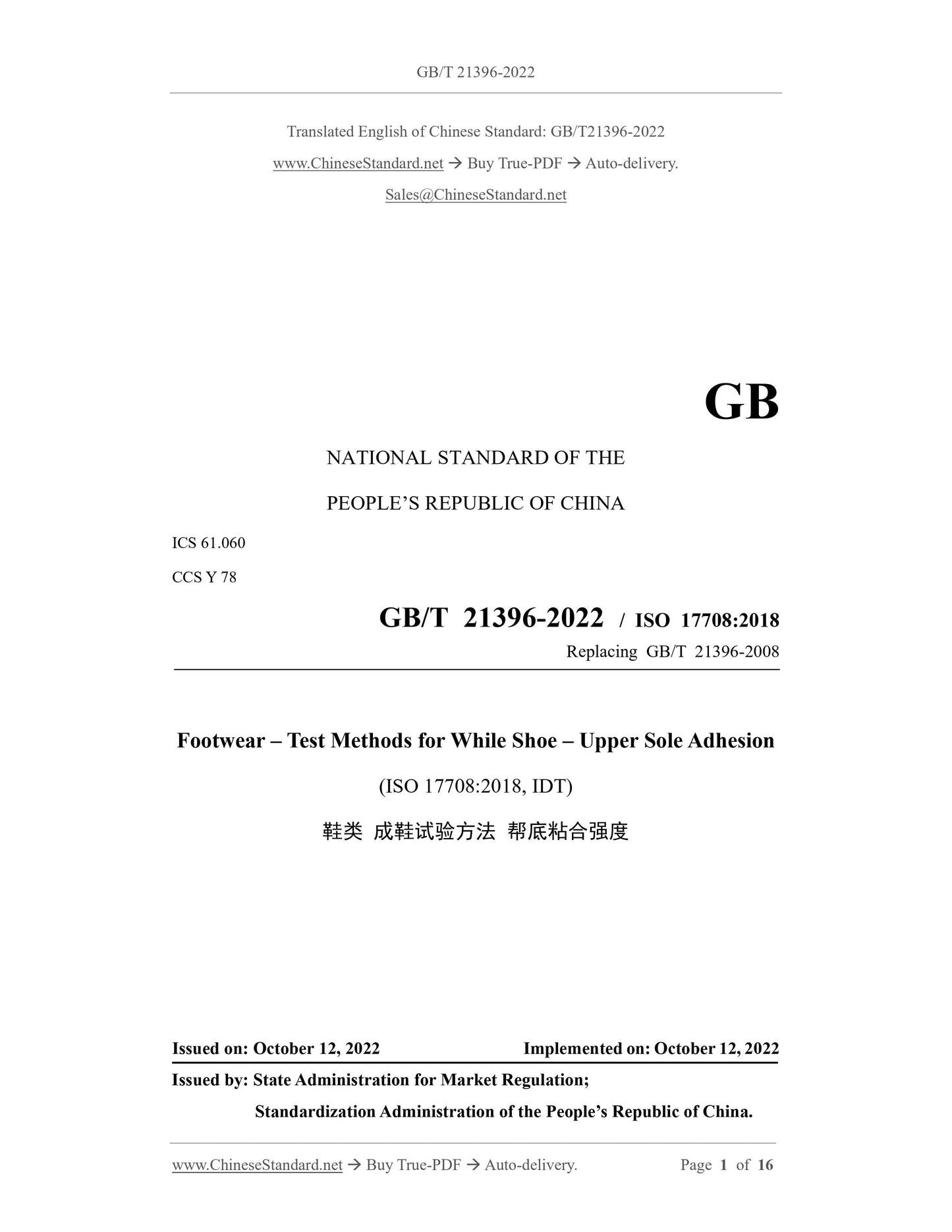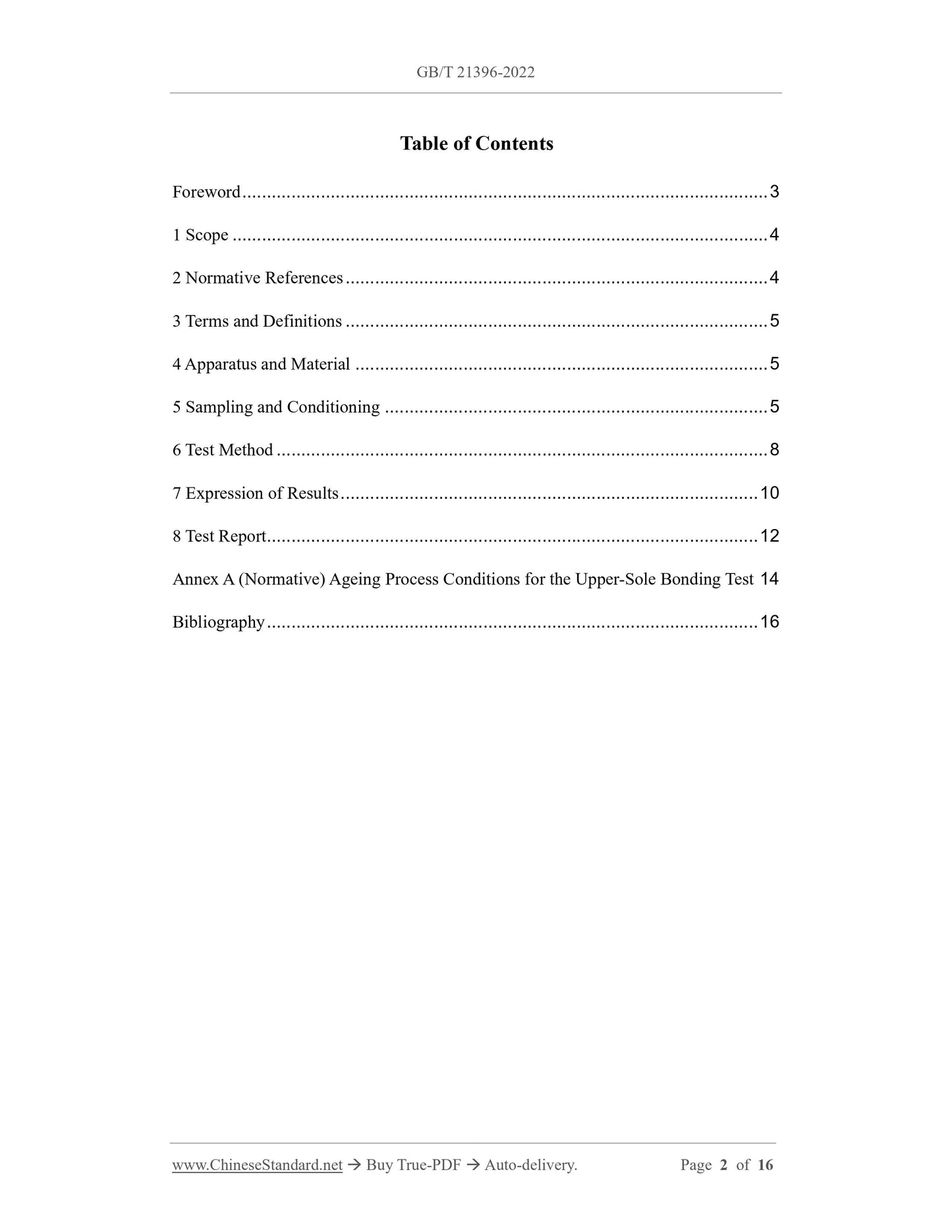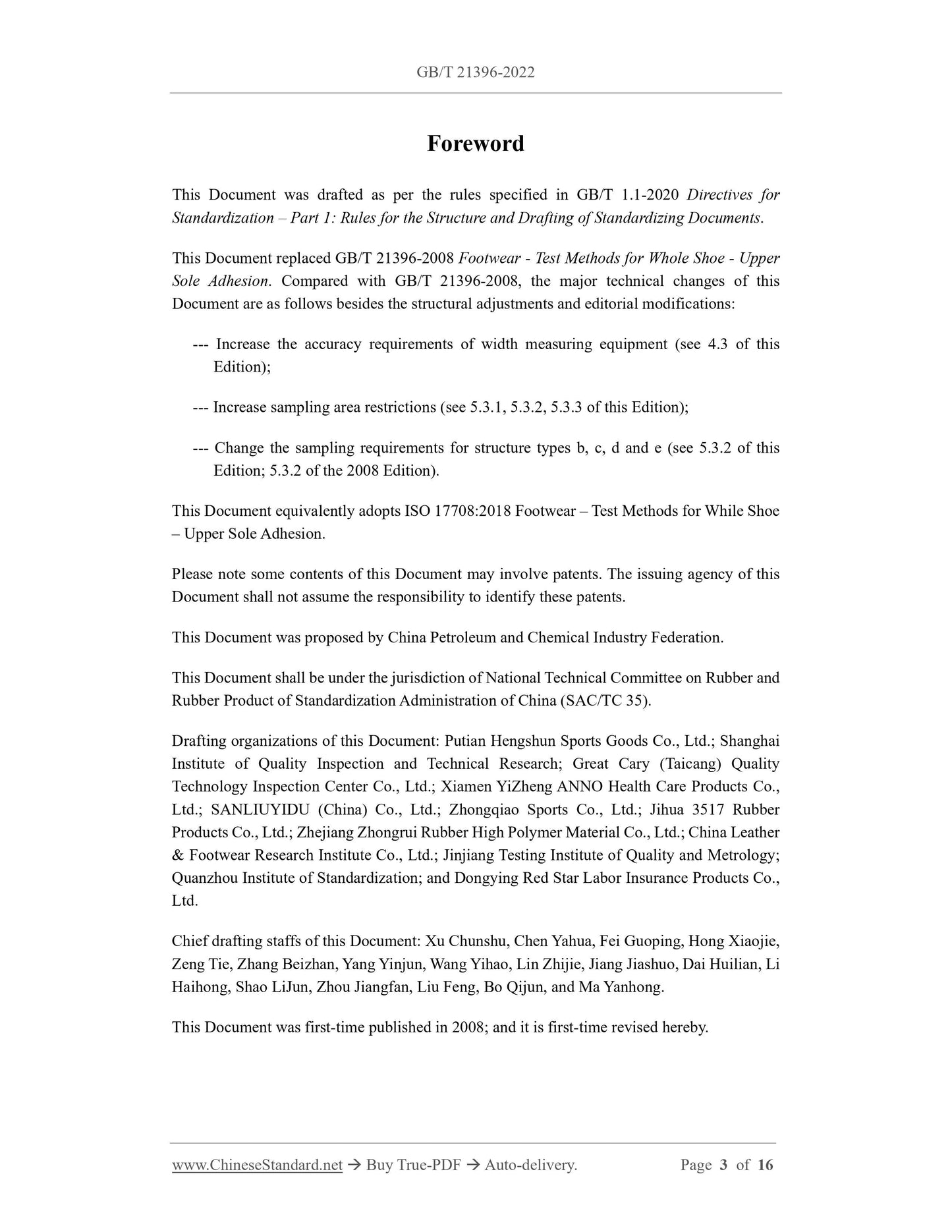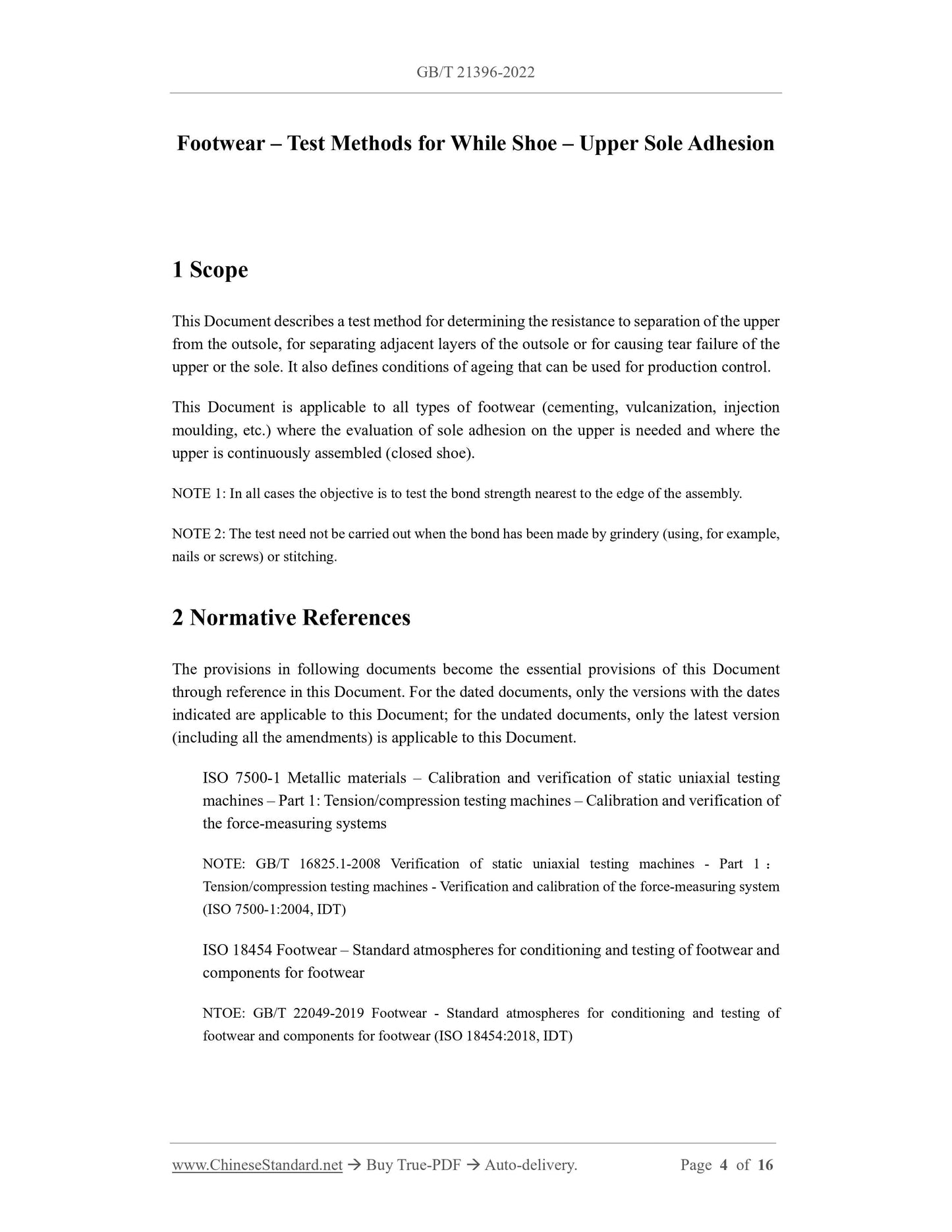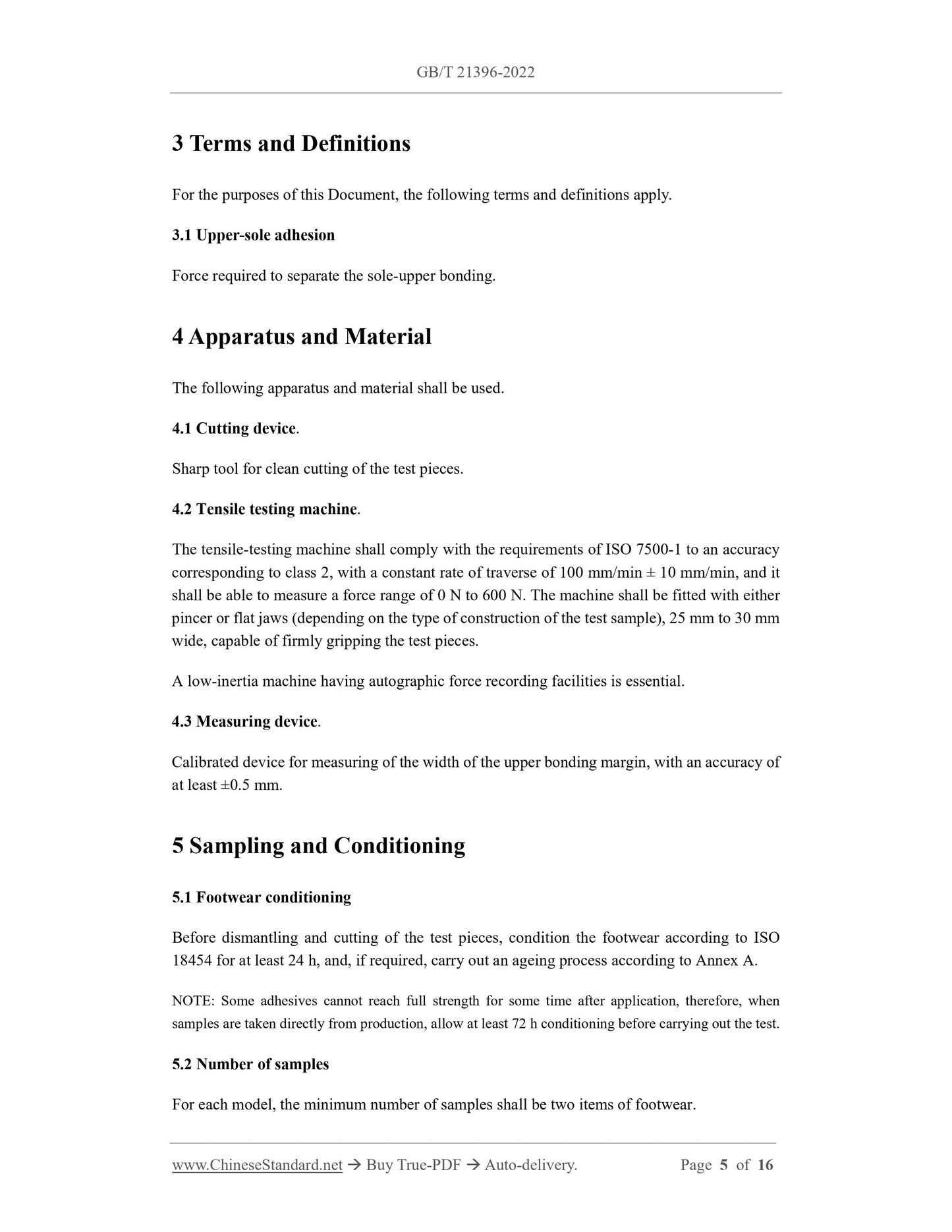1
/
of
5
www.ChineseStandard.us -- Field Test Asia Pte. Ltd.
GB/T 21396-2022 English PDF (GB/T21396-2022)
GB/T 21396-2022 English PDF (GB/T21396-2022)
Regular price
$155.00
Regular price
Sale price
$155.00
Unit price
/
per
Shipping calculated at checkout.
Couldn't load pickup availability
GB/T 21396-2022: Footwear - Test methods for whole shoe - Upper sole adhesion
Delivery: 9 seconds. Download (and Email) true-PDF + Invoice.Get Quotation: Click GB/T 21396-2022 (Self-service in 1-minute)
Newer / historical versions: GB/T 21396-2022
Preview True-PDF
Scope
This Document describes a test method for determining the resistance to separation of the upperfrom the outsole, for separating adjacent layers of the outsole or for causing tear failure of the
upper or the sole. It also defines conditions of ageing that can be used for production control.
This Document is applicable to all types of footwear (cementing, vulcanization, injection
moulding, etc.) where the evaluation of sole adhesion on the upper is needed and where the
upper is continuously assembled (closed shoe).
NOTE 1: In all cases the objective is to test the bond strength nearest to the edge of the assembly.
NOTE 2: The test need not be carried out when the bond has been made by grindery (using, for example,
nails or screws) or stitching.
Basic Data
| Standard ID | GB/T 21396-2022 (GB/T21396-2022) |
| Description (Translated English) | Footwear - Test methods for whole shoe - Upper sole adhesion |
| Sector / Industry | National Standard (Recommended) |
| Classification of Chinese Standard | Y78 |
| Classification of International Standard | 61.060 |
| Word Count Estimation | 12,175 |
| Date of Issue | 2022-10-12 |
| Date of Implementation | 2022-10-12 |
| Older Standard (superseded by this standard) | GB/T 21396-2008 |
| Issuing agency(ies) | State Administration for Market Regulation, China National Standardization Administration |
Share
